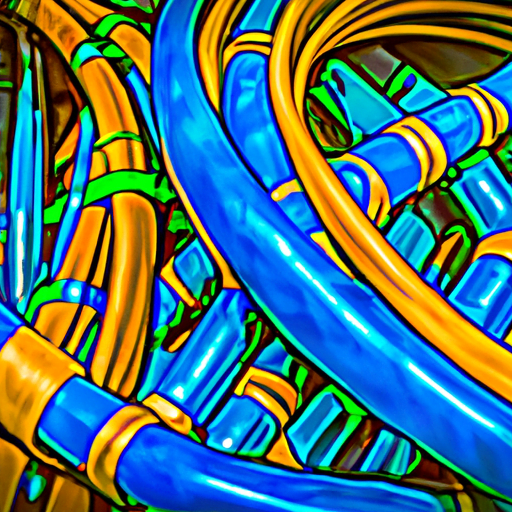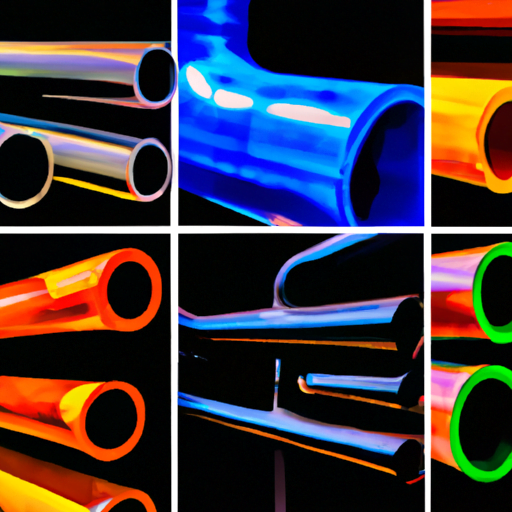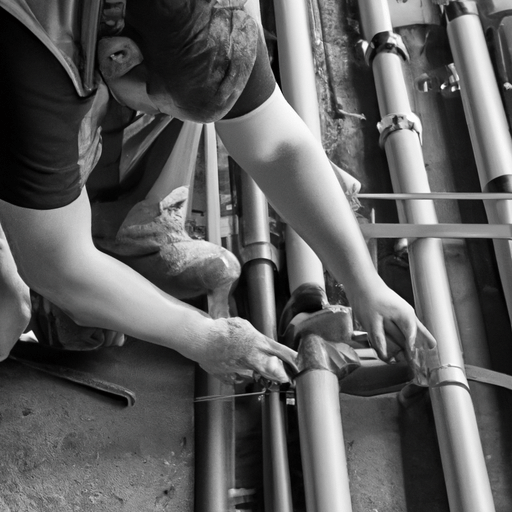Polyethylene (PE) pipes have become increasingly popular in various industries due to their numerous advantages and applications. These pipes offer exceptional durability, flexibility, and resistance to chemicals, making them a reliable choice for a wide range of projects. In this article, we will delve into the advantages and applications of PE pipes, explore the different types and grades available, and provide installation and maintenance tips to ensure their longevity and efficiency. Whether you are a contractor, engineer, or homeowner, understanding the benefits and proper usage of PE pipes can greatly enhance your project outcomes and save you time and money in the long run.
- 1. “Understanding the Advantages and Applications of PE Pipes”
- 2. “Exploring the Different Types and Grades of PE Pipes”
- 3. “Installation and Maintenance Tips for PE Pipes: Ensuring Longevity and Efficiency”
1. “Understanding the Advantages and Applications of PE Pipes”

Polyethylene (PE) pipes have gained significant popularity and have become widely used in various industries due to their numerous advantages and applications. Understanding these advantages and applications is crucial for anyone involved in construction, infrastructure development, or plumbing.
One of the primary advantages of PE pipes is their exceptional durability. These pipes are highly resistant to corrosion, chemicals, and abrasion, making them suitable for use in harsh environments. Unlike other materials like steel or concrete, PE pipes do not rust or deteriorate over time, ensuring a longer lifespan and reduced maintenance costs.
Another significant advantage of PE pipes is their flexibility. These pipes can be easily bent and maneuvered without the need for complex fittings or joints. This flexibility allows for a hassle-free installation process, especially in areas with challenging terrains or limited space. Additionally, the lightweight nature of PE pipes makes handling and transportation more convenient and cost-effective.
PE pipes also offer excellent resistance to UV radiation, making them suitable for outdoor applications. Unlike other materials, these pipes can withstand prolonged exposure to sunlight without any degradation, making them an ideal choice for irrigation systems, water supply networks, and underground applications.
Furthermore, PE pipes have superior hydraulic properties, ensuring efficient fluid flow. Their smooth interior surface reduces friction, minimizing pressure loss and energy consumption. This characteristic is particularly crucial in industries where the transportation of liquids or gases is involved, such as oil and gas, mining, and water distribution.
Due to their excellent chemical resistance, PE pipes find applications in various industries. They are commonly used for transporting chemicals, acids, and other corrosive substances, as they can withstand the harsh effects without deterioration or contamination. Moreover, PE pipes are widely utilized in the agricultural sector for irrigation, drainage systems, and wastewater management.
In the construction industry, PE pipes are extensively used for gas distribution, as they provide a safe and reliable solution. Their resistance to leakage and ability to withstand high pressures make them an ideal choice for natural gas transportation.
In summary, PE pipes offer numerous advantages, including durability, flexibility, UV resistance, superior hydraulic properties, and chemical resistance. These features make them suitable for a wide range of applications, such as water supply, irrigation, gas distribution, chemical transportation, and infrastructure development. Understanding the advantages and applications of PE pipes is essential for professionals in various industries to make informed decisions and ensure the success of their projects.
2. “Exploring the Different Types and Grades of PE Pipes”

Polyethylene (PE) pipes are widely used in various industries due to their excellent properties and versatility. When it comes to choosing the right PE pipe for a specific application, understanding the different types and grades available is crucial.
1. HDPE (High-Density Polyethylene) Pipes:
HDPE pipes are the most commonly used type of PE pipes. They are known for their exceptional strength, durability, and resistance to corrosion, chemicals, and UV rays. HDPE pipes have a high density and are often used for water and gas distribution systems, as well as for industrial applications that require superior strength and leak-free performance.
2. MDPE (Medium-Density Polyethylene) Pipes:
MDPE pipes are a lighter version of HDPE pipes and have a lower density. They offer good flexibility and are commonly used for low-pressure gas distribution, as well as for water supply in rural and suburban areas. MDPE pipes are resistant to cracking and have good resistance to stress cracking caused by external factors.
3. LDPE (Low-Density Polyethylene) Pipes:
LDPE pipes have the lowest density among the three types of PE pipes. They are highly flexible and are primarily used for irrigation and water supply in agricultural applications. LDPE pipes are not suitable for high-pressure systems due to their lower strength, but they excel in applications where flexibility and impact resistance are essential.
4. LLDPE (Linear Low-Density Polyethylene) Pipes:
LLDPE pipes offer a balance between the flexibility of LDPE pipes and the strength of HDPE pipes. They have a linear structure that provides improved resistance to cracking, making them suitable for applications that require higher strength and durability. LLDPE pipes are commonly used for gas distribution, water supply, and industrial applications.
In addition to the different types, PE pipes are also available in various grades. The grades are determined based on the specific requirements of the application, such as the expected temperature, pressure, and chemical resistance. The grades range from PE32, suitable for low-pressure applications, to PE100, which offers excellent strength and resistance to cracking.
When selecting a PE pipe, it is important to consider the specific needs of the application and consult with experts or manufacturers to ensure the right type and grade are chosen. Proper installation techniques and adherence to industry standards are also crucial for the optimal performance and longevity of PE pipes.
3. “Installation and Maintenance Tips for PE Pipes: Ensuring Longevity and Efficiency”

PE (PolyEthylene) pipes are widely used in various industries due to their durability, flexibility, and resistance to corrosion. However, like any other material, proper installation and regular maintenance play a crucial role in ensuring the longevity and efficiency of these pipes. Here are some important tips to follow during the installation and maintenance of PE pipes:
1. Proper Handling and Storage: PE pipes should be handled with care during transportation and storage. Avoid dropping the pipes or allowing heavy objects to rest on them, as this can cause damage. It is also important to store the pipes in a cool, dry place away from direct sunlight to prevent premature degradation.
2. Correct Pipe Alignment: During installation, ensuring the correct alignment of PE pipes is essential. Misalignment can lead to stress concentrations, resulting in premature failure. Proper alignment can be achieved by using alignment clamps or guides and checking the alignment at regular intervals during installation.
3. Thorough Cleaning: Before installation, it is crucial to clean the pipes thoroughly to remove any dirt, debris, or foreign materials. This can be done using a mild detergent solution or a suitable cleaning agent. Clean pipes ensure a smooth flow of fluids and prevent blockages or contamination.
4. Proper Jointing Techniques: PE pipes are commonly joined using heat fusion techniques such as butt fusion or electrofusion. It is important to follow the manufacturer’s guidelines and use the appropriate fusion equipment to ensure strong and leak-proof joints. Improper jointing can lead to pipe failure or leakage, compromising the system’s efficiency.
5. Backfilling and Trenching: When backfilling around PE pipes, care should be taken to avoid sharp objects or stones that could potentially damage the pipe. The backfill material should be free from rocks or other sharp debris that could cause stress on the pipe. Additionally, proper trenching techniques should be employed to prevent excessive bending or stressing of the pipe during installation.
6. Regular Inspection and Maintenance: To ensure the longevity and efficiency of PE pipes, regular inspection and maintenance are crucial. Inspect the pipes periodically for signs of damage, leakage, or degradation. Any issues should be addressed promptly to prevent further damage. Additionally, periodic cleaning and flushing of the pipes can help remove sediment or deposits that may affect the flow or quality of fluids.
In conclusion, proper installation and regular maintenance are essential to ensure the longevity and efficiency of PE pipes. By following the tips mentioned above, industries can maximize the performance of their PE pipe systems, minimize the risk of failures or leaks, and ultimately ensure the smooth operation of their infrastructure.